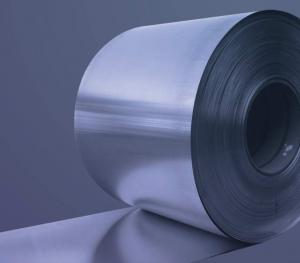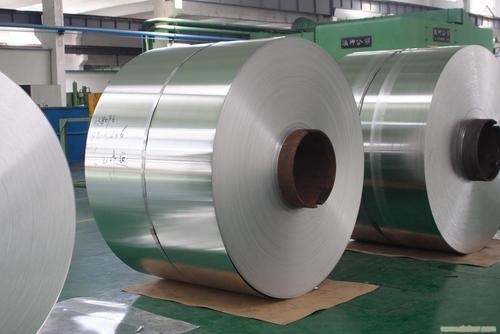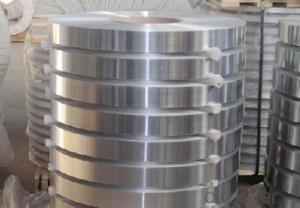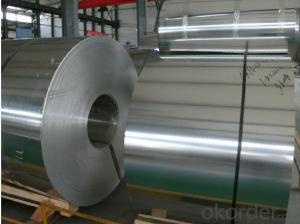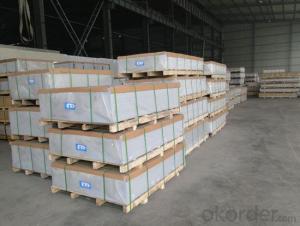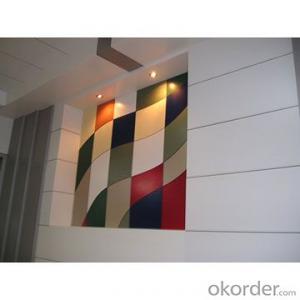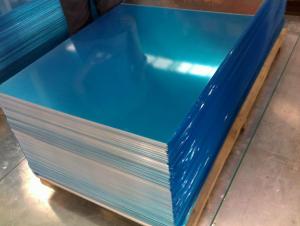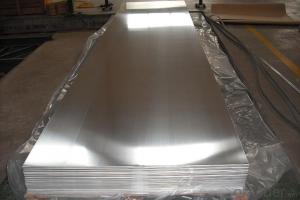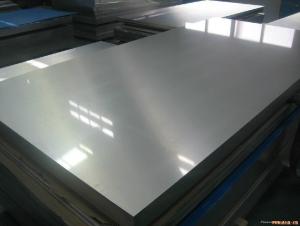Aluminum strip/sheet AA3015 Used for Composite Sheet
- Loading Port:
- Shanghai
- Payment Terms:
- TT or LC
- Min Order Qty:
- 5 m.t.
- Supply Capability:
- 150000 m.t./month
OKorder Service Pledge
OKorder Financial Service
You Might Also Like
1.Structure of Aluminum strip/sheet AA3015:
Aluminum strip/sheet AA3015 is designed for many field such as electronics, instruments, lighting decoration, packing industry, and house decoration, curtain wall, honeycomb-core panel, sandwich panel, aluminum composite panel, aluminum composite pipe etc.. Aluminum strip/sheet AA3015 is hard and everlasting under the blazing sun. You can choose the alloys as your habitation and we will do our best to meet your requests.
2.Main Features of the Aluminum strip/sheet AA3015:
• Smooth surface
• High manufacturing accuracy
• High strength of extension and yield
• Well packaged
• No marks, no scratch, no excessive oil
3. Aluminum strip/sheet AA3015
Alloy: | AA1050, 1060, 1070, 1100, 3003, 3004, 3005, 3105, 5052, 5083, 5754, 8011, 8006 |
Temper: | H14, H16, H18, H22, H24, H26, H32, O/F |
Thickness: | 0.2-100mm |
Width: | 30mm-1700mm |
4. Production of Aluminum strip/sheet AA3015
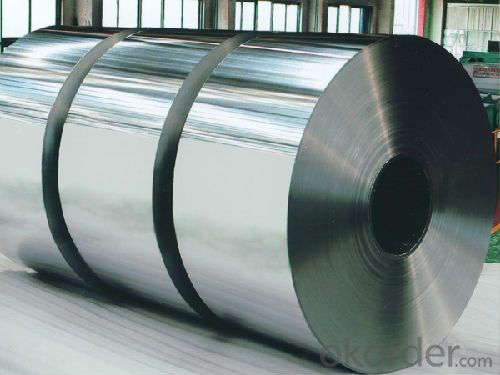
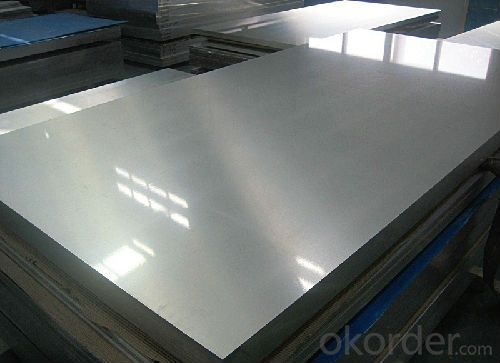
5.FAQ
We have organized several common questions for our clients,may help you sincerely:
① How about your company?
A world class manufacturer & supplier of aluminum coil and alloy blanks. Aluminum production base is comprised of 18 aluminum annealers, 10 coil and foil mills, 4 continuous production lines, 2 hot rolling production line and 3 prepainted lines.
Export 5000 tons per month to Asia, America and Middle East. Always do the best for our clients.
②Can you guarantee the quality of the products?
We are responsible for the quality of materials to get a long-term cooperation with clients in a reasonable period of time and we are glad to arrange and coordinate any third party inspection for you.
③What is the delivery time after purchase?
35 day after receiving client’s deposit or correct LC
Aluminum is the thickness below 0.2mm above to 500mm, 200mm width above, within the length of 16m aluminum material for aluminum plate or aluminum sheet, 0.2 mm below for aluminum, less than 200 mm in width as row material or bar (of course, with the progress of equipment, the most wide can do 600 mm row material more). Aluminum sheet refers to the rectangular plate with aluminum ingot rolling processing, divided into pure aluminum plate, aluminum alloy, aluminium sheet, thick aluminum riffled aluminium sheet.
The use of aluminum sheet: 1.Lighting 2. solar reflector plate 3. the appearance of the building 4. interior decoration, ceiling, metope 5.furniture, cabinets, 6. elevator, signs, nameplate, bags 7. car inside and outside decoration. Interior decoration, such as frame 8. household appliances: refrigerators, microwave ovens, audio equipment, such as 9.Aerospace and military aspects, such as China's large aircraft manufacturing, the Shenzhou series of spacecraft, satellites and other aspects. 10.mechanical parts processing 11.mold manufacturing 12.chemical / thermal insulation pipe coating.
Classification of aluminium sheet:
In the aluminum alloy grades are representative of the significance, the following according to the 7075T651 aluminum plate number as an example. The first 7 represents aluminum and aluminum alloy group Al Zn Mg based alloys. Aluminum and aluminum alloy groups are divided into nine categories. Among them, 1, 3, 5, 6, 7 series of aluminum, aluminum alloy, the other series in the actual use of the use of less chance.
First types: industrial pure aluminum
Second types: Al Cu alloy
Third types: aluminum manganese alloy
Fourth types: aluminum silicon alloy
Fifth types: aluminum magnesium alloy
Sixth types: aluminum magnesium silicon alloy
Seventh categories: aluminum zinc magnesium copper alloy
The eighth category: other alloys
Ninth type: spare alloy.
- Q: Just want to know for any boat builders out there. I have been told by my local paddling store that there are no aluminum kayaks. Why couldn't i build one? it cant be weight, I would build the frame from 1/2 inch square aluminum tubing and the body out of 1/32 high grade sheeting. So why does something like this not exist?
- There okorder
- Q: They say aluminum can be found in deodorants.And this aluminum is absorbed by the skin and block pores.Does the amount of aluminum affect the rate of how it dries up?
- Like any chemical reaction quantity would matter. Aluminum Chloride is one of several active ingredients. It works by doing two things. The first is it is an astrigent which causes the sweat glands to shrink or close up. The second is that it reacts with sweat to form a gell like substance that plugs up the pores. The combined effect is to stop sweating. The two effects are temporary and the pores eventually open up and clear themselves out. These two drying effects of aluminum chloride are fast acting and work upon application. So to answer your question i would consider aluminum as a means of making a deoderant dry faster by stopping the sweat from leaving the pores.
- Q: This question asks for the cost of an aluminum coil, which can vary based on factors such as weight, quality, and market conditions.
- <p>The cost of an aluminum coil can vary significantly based on its weight, grade, and current market prices. As of my last update, the price per pound can range from about $0.30 to $1.50, but this is subject to change with market fluctuations. For precise pricing, it's best to check with a supplier or on a commodity exchange, as aluminum prices are dynamic and influenced by global supply and demand.</p>
- Q: Can aluminum coils be used for heat dissipation purposes?
- Yes, aluminum coils can be effectively used for heat dissipation purposes. Aluminum is an excellent conductor of heat, with high thermal conductivity and low thermal resistance. This makes it an ideal material for transferring heat away from a source and dissipating it into the surrounding environment. Aluminum coils are commonly used in various applications such as refrigeration, air conditioning, radiator systems, and heat exchangers. The coils are designed to maximize the surface area available for heat transfer, allowing for efficient cooling and dissipation of heat. Additionally, aluminum is lightweight and corrosion-resistant, making it a practical choice for heat dissipation in various industries. Overall, aluminum coils are a reliable and efficient solution for heat dissipation purposes.
- Q: What kind of sensor is appropriate for aluminum coil thickness measurement?
- You can use laser sensor.
- Q: What are the different surface treatment options available for aluminum coils?
- There are several surface treatment options available for aluminum coils, including anodizing, painting, powder coating, and laminating. Anodizing involves creating a protective oxide layer on the surface of the aluminum, providing increased durability and corrosion resistance. Painting allows for a wide range of colors and finishes, while powder coating offers a more durable and environmentally friendly option. Laminating involves applying a protective film to the surface of the coil, providing added protection and enhancing its appearance.
- Q: Is it possible to utilize a press machine to bend aluminum coils?
- <p>Yes, you can use a press to bend aluminum coils. Presses are versatile machines capable of bending various materials, including aluminum. However, it's crucial to select the appropriate press type and size for the specific coil dimensions and desired bend. Additionally, ensure the press has the necessary tonnage to handle the bending force required for aluminum. Using the right dies and lubrication can also improve the bending process and prevent damage to the coils. Always follow safety guidelines and consult with equipment specifications to ensure the press is suitable for bending aluminum.</p>
- Q: Are aluminum coils suitable for interior design applications?
- Aluminum coils are indeed a fitting choice for interior design purposes. The versatility of aluminum as a material presents a multitude of advantages for interior design endeavors. To begin with, aluminum possesses a lightweight nature, ensuring ease of handling and installation. This quality proves particularly advantageous for projects necessitating extensive installations or suspended ceilings. Moreover, aluminum coils exhibit exceptional durability and corrosion resistance, guaranteeing extended lifespan and suitability for high-traffic regions. Furthermore, aluminum can be effortlessly tailored and molded to meet specific design requirements, thereby offering limitless design possibilities. Additionally, the material is available in a plethora of finishes, including brushed, polished, or anodized options, which can significantly enhance the aesthetic allure of any interior space. Furthermore, aluminum emerges as a sustainable and eco-friendly alternative, given its easy recyclability and low carbon footprint relative to other materials. All in all, aluminum coils represent a pragmatic and visually pleasing choice for interior design applications.
- Q: What are the weight savings achieved by using aluminum coils?
- The weight savings achieved by using aluminum coils can vary depending on the specific application, but generally speaking, aluminum coils are significantly lighter than traditional materials such as steel. On average, aluminum coils can provide weight savings of around 50% or more compared to steel coils. This weight reduction is especially beneficial in industries like automotive, aerospace, and construction, where lighter materials can contribute to improved fuel efficiency, increased load capacity, and enhanced overall performance.
- Q: How do aluminum coils perform in high-pressure applications?
- Aluminum coils perform well in high-pressure applications due to their excellent strength-to-weight ratio and corrosion resistance. They are capable of withstanding high pressures without deformation or failure, making them a reliable choice for various industrial and HVAC systems.
Send your message to us
Aluminum strip/sheet AA3015 Used for Composite Sheet
- Loading Port:
- Shanghai
- Payment Terms:
- TT or LC
- Min Order Qty:
- 5 m.t.
- Supply Capability:
- 150000 m.t./month
OKorder Service Pledge
OKorder Financial Service
Similar products
Hot products
Hot Searches
Related keywords

